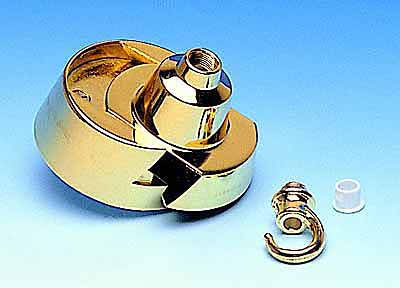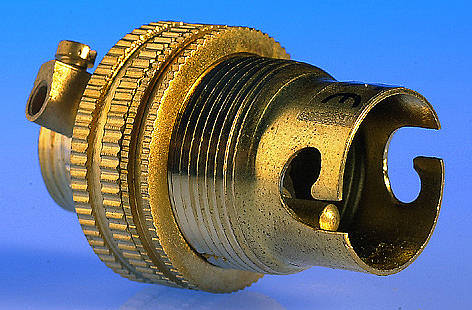So, pendants from big UK DIY chain - they seem to sell a few of them and have done for at least a year or so (have had my eye on them).
Finally bought, fitted, tested earth continuity and…****…the metal lamp holders aren’t earthed. Obvious now I look again – I didn’t think to even look for earth continuity in the shop (or at any point while screwing them in…). The ceiling rose is earthed fine, but it’s just 2 cores in 2 black nylon overbraids from there to the lamp holder. It’s stated clearly as Class 1 on the box.
The construction of the lamp holder does seem robustly insulated and the L and N contacts sit in a neat moulded plastic insert that could quite conceivably be Class 2 should it be a standalone thing. I haven’t managed to easily take them apart to get a look internally, though.
So this seems weird, right? What would you more knowledgeable folk do when testing up a fitting that’s supposed to be from a reputable source but fails the tests it must pass according to the approvals it is sold with? Judgment of the installer?
i.e. can stores sell any old electrical crap and its down to the installer to ensure it is fit for purpose? (in this case, the logical conclusion is to take it apart and run an earth wire. Or more practically REFUND)
My most optimistic take is that the store do hold some liability risk should something go wrong with anything they sell, and are happy that a failure in the lamp holder is so vanishingly unlikely that it is fine to sell in its current state as a Class 1 device, which if it’s good enough for them and their lawyers, it’s good enough for me.
They could then also be assuming that 99% of their customers are DIY’ing it and not aware of the tests/regs anyway, so the 1% return rate they do get, from those that do the tests, is easily offset in the cost reduction of the design...
Any thoughts?
To be clear – this is DIY
Cheers
Finally bought, fitted, tested earth continuity and…****…the metal lamp holders aren’t earthed. Obvious now I look again – I didn’t think to even look for earth continuity in the shop (or at any point while screwing them in…). The ceiling rose is earthed fine, but it’s just 2 cores in 2 black nylon overbraids from there to the lamp holder. It’s stated clearly as Class 1 on the box.
The construction of the lamp holder does seem robustly insulated and the L and N contacts sit in a neat moulded plastic insert that could quite conceivably be Class 2 should it be a standalone thing. I haven’t managed to easily take them apart to get a look internally, though.
So this seems weird, right? What would you more knowledgeable folk do when testing up a fitting that’s supposed to be from a reputable source but fails the tests it must pass according to the approvals it is sold with? Judgment of the installer?
i.e. can stores sell any old electrical crap and its down to the installer to ensure it is fit for purpose? (in this case, the logical conclusion is to take it apart and run an earth wire. Or more practically REFUND)
My most optimistic take is that the store do hold some liability risk should something go wrong with anything they sell, and are happy that a failure in the lamp holder is so vanishingly unlikely that it is fine to sell in its current state as a Class 1 device, which if it’s good enough for them and their lawyers, it’s good enough for me.
They could then also be assuming that 99% of their customers are DIY’ing it and not aware of the tests/regs anyway, so the 1% return rate they do get, from those that do the tests, is easily offset in the cost reduction of the design...
Any thoughts?
To be clear – this is DIY
Cheers









